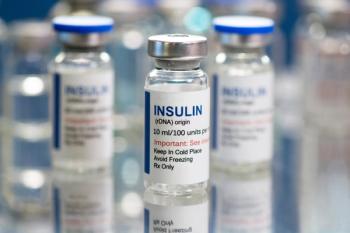
Apremilast Plus Phototherapy Combination Effective Treating Moderate to Severe Psoriasis Vulgaris
Prior evidence regarding the safety and efficacy of the combination of apremilast and phototherapy was lacking, prompting researchers to investigate further.
A combined regimen of apremilast and phototherapy is sufficient to treat patients with moderate to severe psoriasis vulgaris, but may require a longer treatment duration, according to a study published in the Journal of Dermatology.
Patients with moderate to severe psoriasis vulgaris are commonly administered the oral phosphodiesterase-4 inhibitor apremilast along with phototherapy. However, the authors of the study noted that evidence is lacking regarding the safety and efficacy of the combination.
“Phototherapy has many advantages in the treatment of psoriasis, but continued use is inconvenient because the effects of the therapy appear only after a long time, and patients are required to frequently visit the clinic for irradiation,” the study authors wrote. “In this study, the combination of apremilast and phototherapy demonstrated sufficient therapeutic effects in psoriasis despite the reduced frequency of visits to the clinic, which may have considerable implications in clinical practice.”
The study evaluated the safety and efficacy of phototherapy alone vs the combination of apremilast and phototherapy. The researchers conducted an open-label, multicenter, randomized, parallel-group, active-controlled study across 4 institutions in Japan between November 2018 and February 2020.
Inclusion criteria for patients included being 20 to 80 years of age, having a diagnosis of moderate to severe psoriasis vulgaris, and having shown an inadequate response to topical treatment response. The primary endpoint of the study from baseline to 8 weeks was a Psoriasis Area and Severity Index (PASI) score improvement rate.
Secondary endpoints were PASI score and improvement rate from baseline to 4 and 8 weeks post treatment;number and percentage of patients achieving PASI scores with ≥90%, ≥75%, and ≥50% improvements; PASI score changes from baseline to each evaluation time point; body surface area (BSA) changes from baseline to each evaluation time point;sPGA scores at baseline and at each time point;percentage of patients having an sPGA score of 0 or 1; and changes in EuroQol 5-dimensions 5-level, Dermatology Life Quality Index, and visual analog scale scores for itchiness from baseline to each evaluation time point
Patients were administered apremilast as 10 mg, then 20 mg, then 30 mg, then 40 mg, then 50 mg of apremilast on the first 5 subsequent days after study initiation, with 60 mg administered each day starting on the sixth day. NB-UVB phototherapy was administered twice weekly.
Among 42 participants enrolled in the study, 29 were placed in the combination therapy cohort and 13 in the monotherapy cohort. The investigators found that the combination group had significantly lower PASI scores by weeks 4 and 8 and had more patients achieving a PASI score improvement of ≥75% by 8 weeks.
There was not a statistically significant difference between both groups by week 8. The study showed that both cohorts had a significant decrease in BSA; however, the data showed a greater BSA reduction in the combination cohort. Adverse events (AEs) were reported more frequently in the combination cohort vs the monotherapy chort.
“Our findings indicate that phototherapy as monotherapy was insufficient in patients with high baseline BSA, and concomitant administration of apremilast improved the outcomes,” the study authors wrote. “However, an 8-week treatment regimen may be insufficient for inducing subjective improvement.”
Reference
Morita A, Yamaguchi Y, Tateishi C, Ikumi K, Yamamoto A, Nishihara H, Hayashi D, Watanabe Y, Watanabe Y, Maruyama A, Masuda K, Tsuruta D, Katoh N. Efficacy and safety of apremilast and phototherapy versus phototherapy only in psoriasis vulgaris. J Dermatol. 2022 Sep 24. doi: 10.1111/1346-8138.16566. Epub ahead of print. PMID: 36151864.
Newsletter
Stay informed on drug updates, treatment guidelines, and pharmacy practice trends—subscribe to Pharmacy Times for weekly clinical insights.












































































































































































































